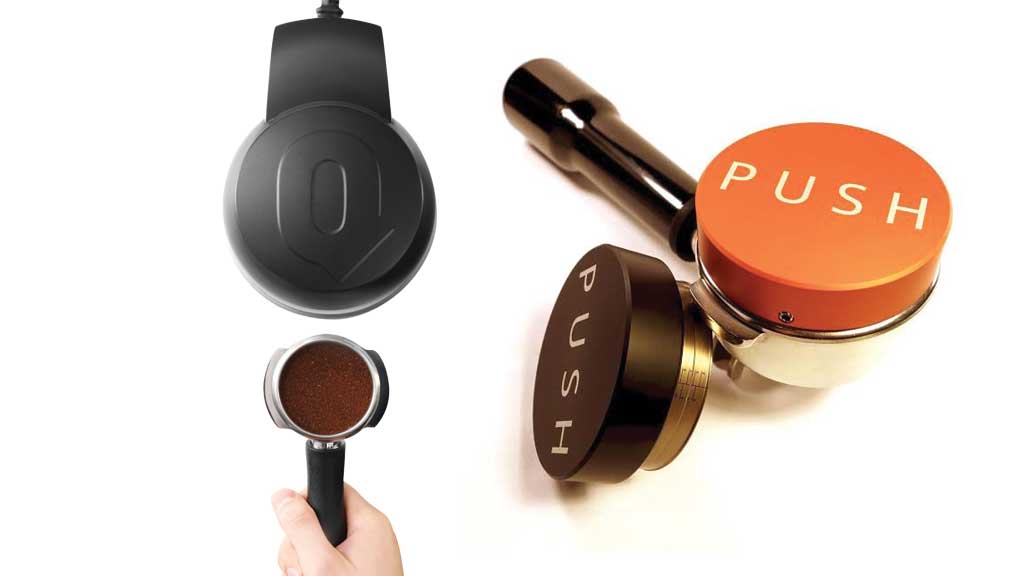Pete Southern realized his invention had potential when his website crashed.
The United Kingdom’s barista champion Maxwell Colonna-Dashwood was using a prototype of his PUSH tamper at the 2015 World Barista Championship in Seattle, Washington, and Southern had flown from England to watch.
“I was just sitting there really nervous that something might go wrong,” Southern says. “There was a noise in the audience when he picked it up. Everybody was whispering, ‘what is that?’”
The oddly shaped tamper did not escape the notice of Livestream viewers either. When Southern posted a link to his website in the chat bar, a flood of traffic crashed his website. Two years later, Southern’s company, Clockwork Espresso, is still struggling to meet the demand for their PUSH Tamper.
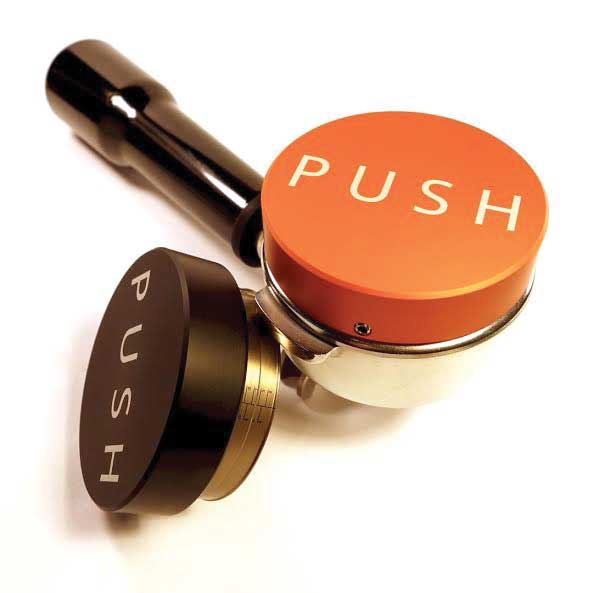
“I didn’t decide ‘I’m going to invent an awesome tamper,’” Southern says. On the contrary, he was merely trying to solve a problem.
Pushing Down Inconsistencies
As any self-aware barista already knows, tamping properly is hard. All coffee experts agree: a level tamp is necessary to have an evenly extracted espresso, but executing a perfectly level tamp with a conventional tamper is easier said than done. Throw in the pressure of a busy café environment, and even the best cafés will experience inconsistent extractions from shot to shot.
Southern’s PUSH tamper is perhaps most profound for its simplicity. Rather than the handle found on a conventional tamper, the PUSH tamper is flat on top, allowing the barista to apply pressure with the palm of their hand. An outer ring adjusts to the portafilter’s circumference, ensuring a perfectly level tamp with every use. The result is a remarkably consistent tamp that has won over competitive baristas and café owners alike.
The idea for the PUSH tamper came after Southern tried to teach his coworkers how to use the office espresso machine. Despite the lesson, his coworkers still preferred the coffees he made them. “It came down to the tamping,” says Southern. “They couldn’t get the hang of it, and they weren’t going to spend hours trying to perfect their tamp.”
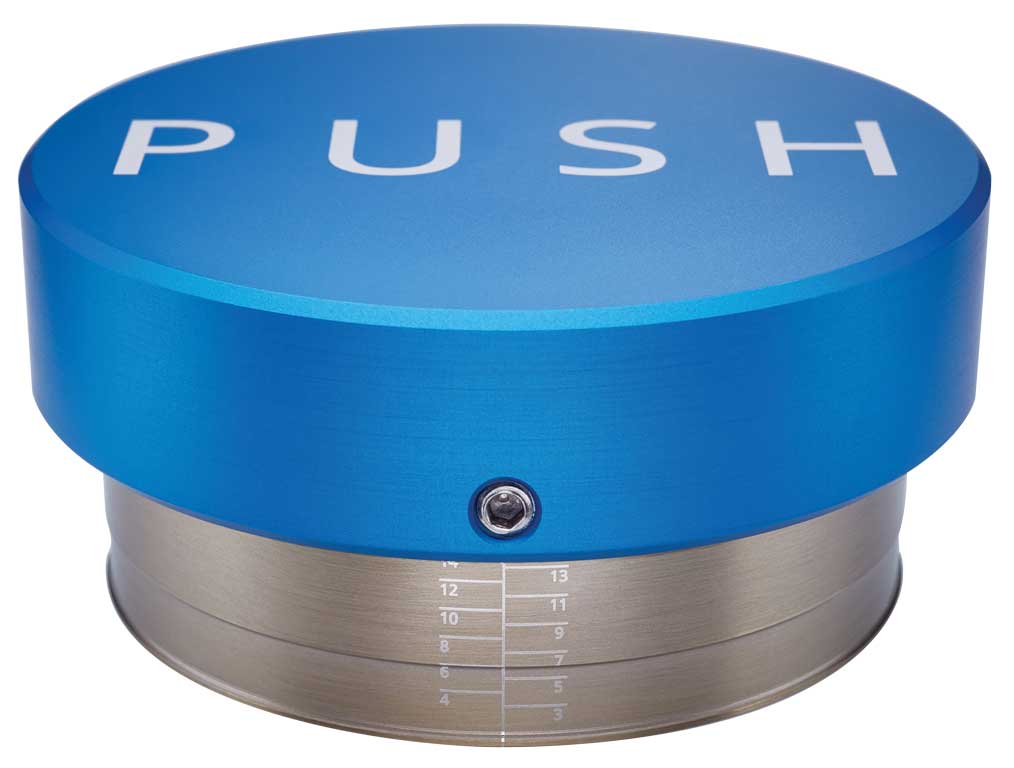
After a few failed attempts at making a better tamper, Southern realized an adjustable guard would ensure a level tamp and remove the need for a handle. He used his office’s 3-D printer to make the prototype. “I was playing with this 3-D-printed tamper, and I thought, ‘This is pretty cool. I would buy this.’ If I would buy this, surely someone else would,” Southern says.
Controlling Variables
The wide array of similar products that other tamper manufacturers have released would certainly suggest Southern is not the only one who feels that way. But the demand for a more user-friendly tamper prompts another question: should baristas be trusted to tamp the espresso in the first place?
Dutch start-up Puqpress takes tamping out of the barista’s hands and automates it with their M1 and Q1 automatic tampers. These devices can be programmed to tamp to exact specifications in one-pound increments.
“We do not claim that Puqpress will tamp better than a skilled barista if you compare them one-on-one,” says Tjeerd Schravendeel, Puqpress’s director of business development. “Our position is that no barista can deliver the same tamp repeatedly, say, a hundred times.” According to Schravendeel, the Puqpress helps with consistency from shot to shot and barista to barista as well.
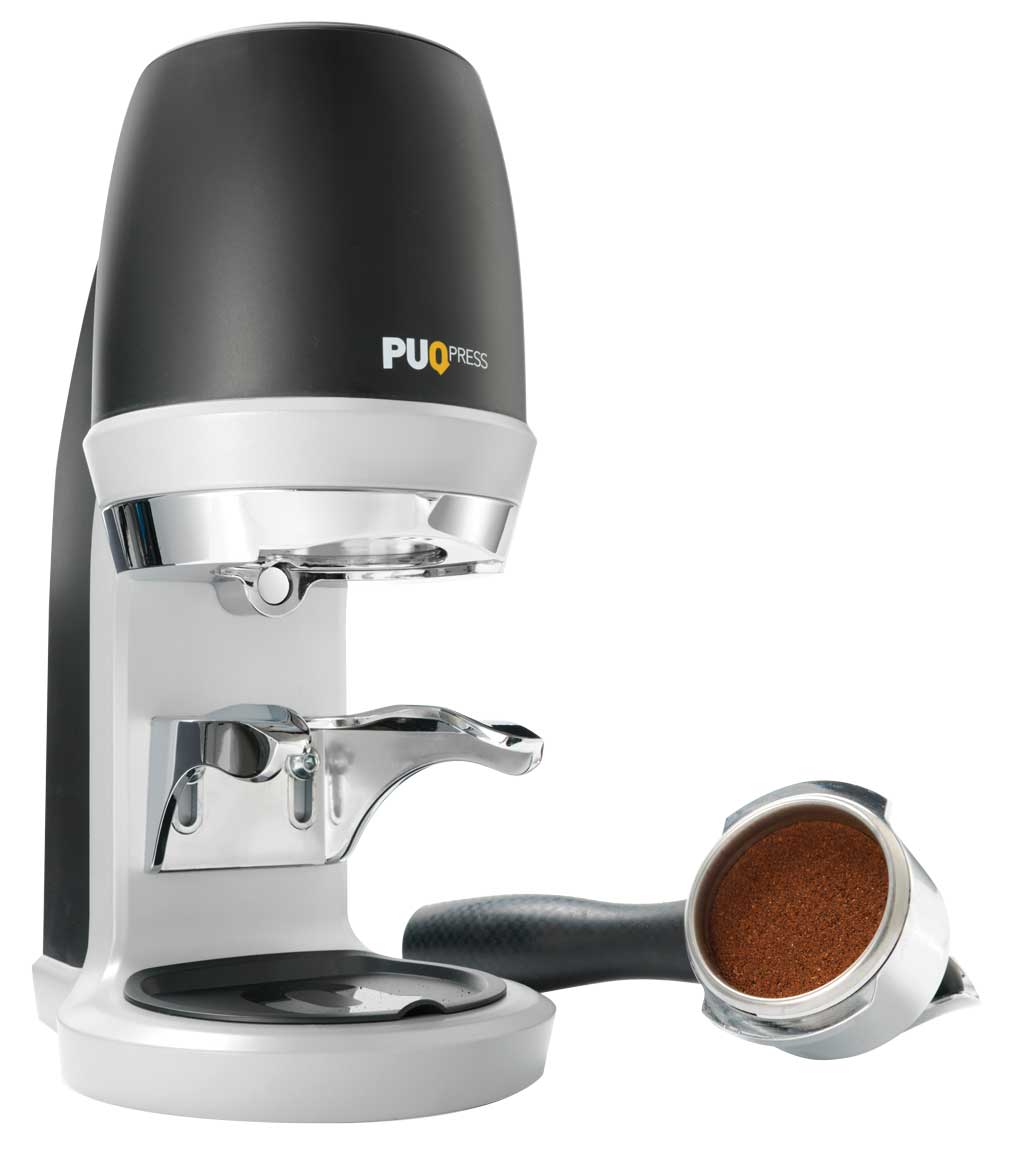
“As long as there are multiple baristas covering shifts, tamping will always be a variable,” he says. “Puqpress has a maximum tamping force variation of 1 percent, meaning that every tamp will be the same, regardless of the barista behind the machine.”
Much like the renewed popularity of volumetric espresso machines and batch brewers, the rise of more user-friendly and automated tampers reflects a specialty coffee industry embracing the consistency of automation over the singularity of hand-crafted processes. But will some find this new wave of tampers to be a bridge too far? Tamping is one of several highly tuned skills the best baristas spend years developing. Does automating tamping devalue the role of the barista?
Southern disagrees his tamper makes the barista any less critical, but he understands the sentiment. “Tamping is not easy to learn, and baristas feel quite proud when they get good at it,” he says. “We’re humans, and we make mistakes, and we’re more likely to make mistakes the busier we are.”
Besides, unlike a skill like latte art, tamping is not a way for baristas to express their personality. “Tamping is either right or wrong,” says Southern. “When you start, it’s almost always wrong.”
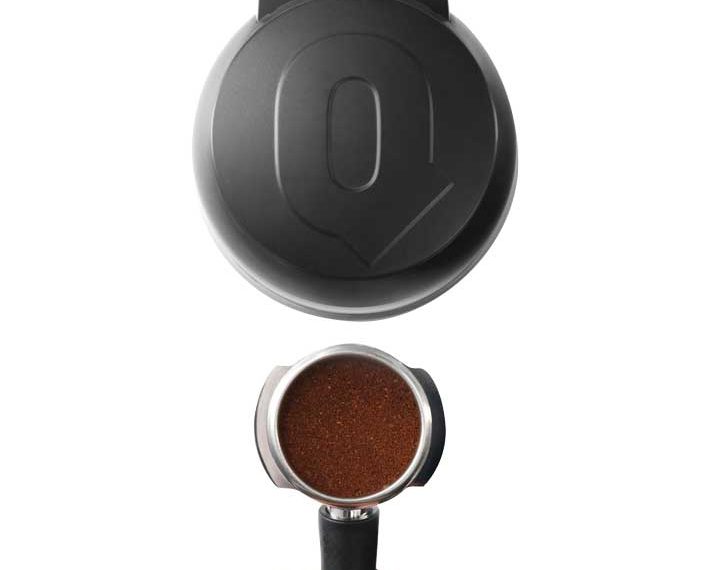
Schravendeel agrees. “In our opinion, it’s beneficial for everyone if a barista can put more time and energy into his or her customer and in controlling the variables of their espresso shots,” he says. Much like some motorists prefer a manual transmission, Southern and Schravendeel recognize that many baristas will choose a traditional tamper, but that doesn’t stop them from believing their products are the way of the future.
Southern says baristas will identify tools that facilitate the best product. “When training new baristas, if you give them a traditional one and a PUSH tamper and teach them how to use both, almost all of the new baristas will choose the one that gives them more control.”
This article was originally published on April 19, 2017 and has been updated to reflect Fresh Cup’s current editorial standards.
Michael Butterworth is the cofounder of etkincoffee.com and thecoffeecompass.com. He lives in Istanbul, Turkey. Cover photo by Cory Eldridge.



